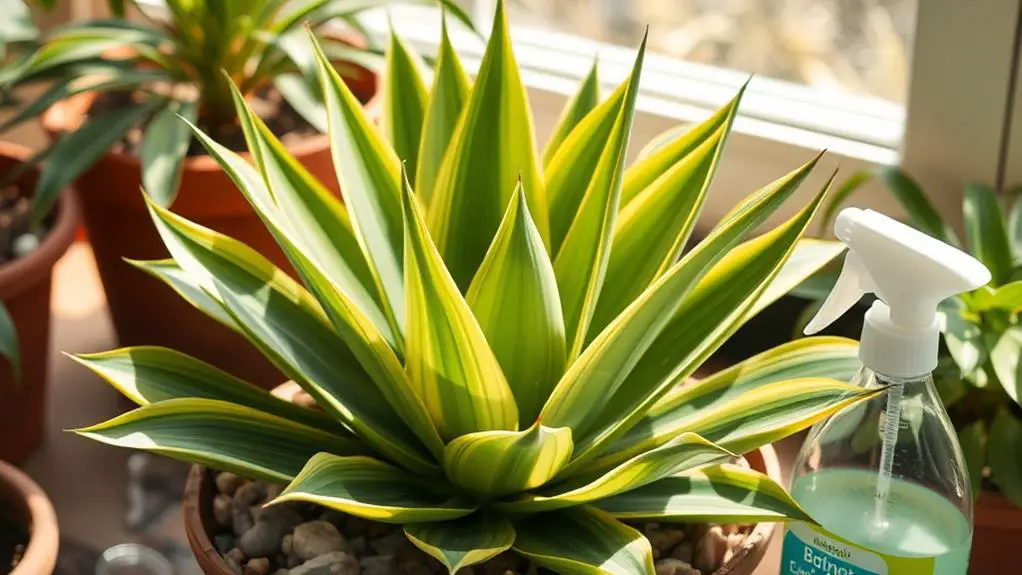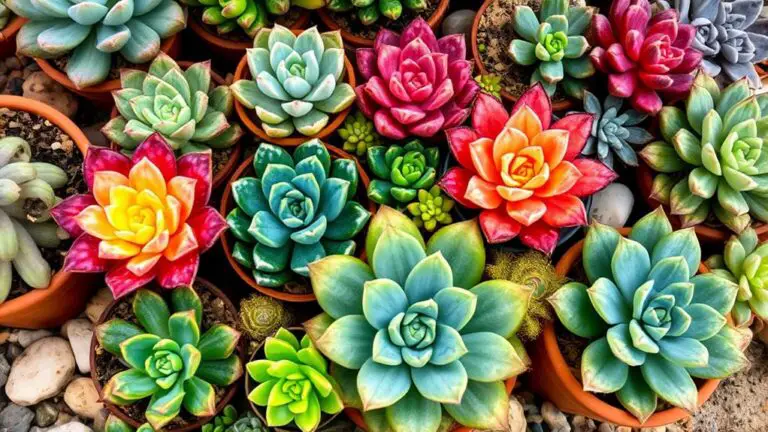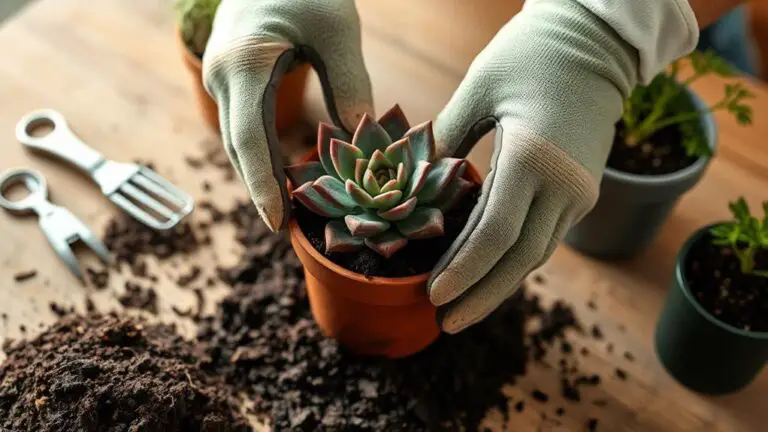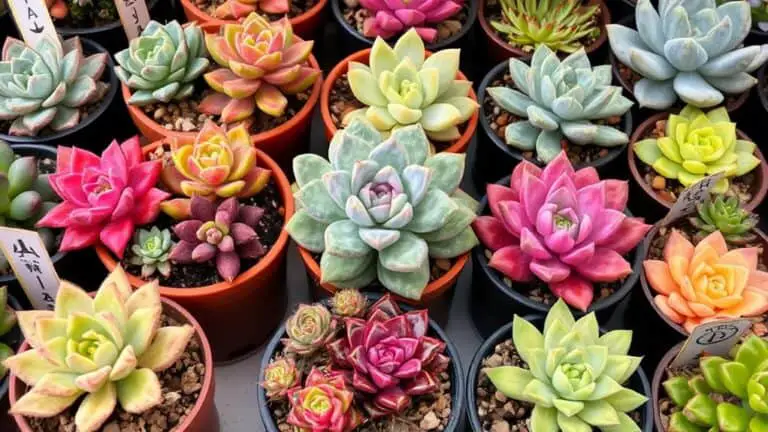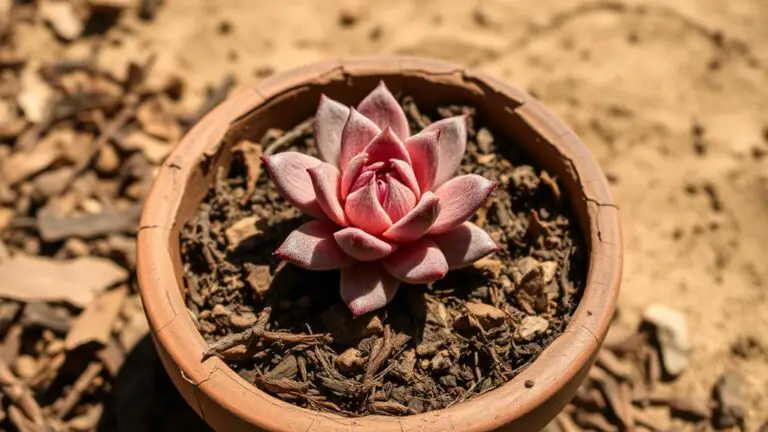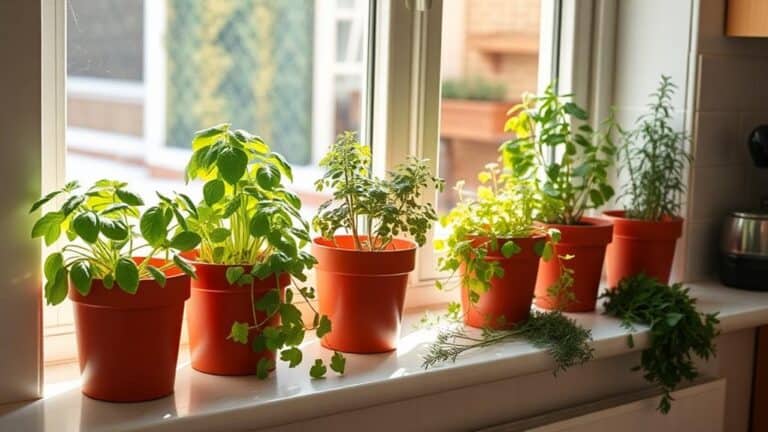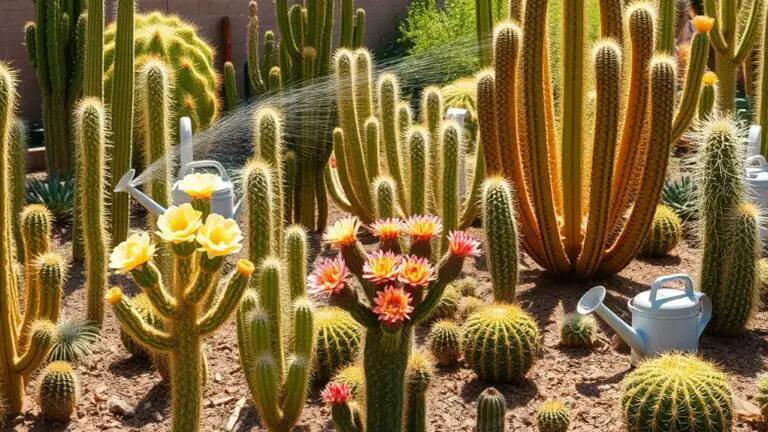Essential Tips for Variegated Agave Butterfly Plant Care
When it comes to caring for your Variegated Agave Butterfly Plant, you need to focus on a few key areas to guarantee its health and vibrant appearance. Start by placing it in a spot where it can soak up at least six hours of direct sunlight each day, as this plant thrives on bright light. Watering should be infrequent, only when the soil is completely dry to avoid root rot. But that's just the beginning. Do you know the best soil mix to use or how to handle potential pests that might appear? Let's explore these essential tips further.
Light Requirements
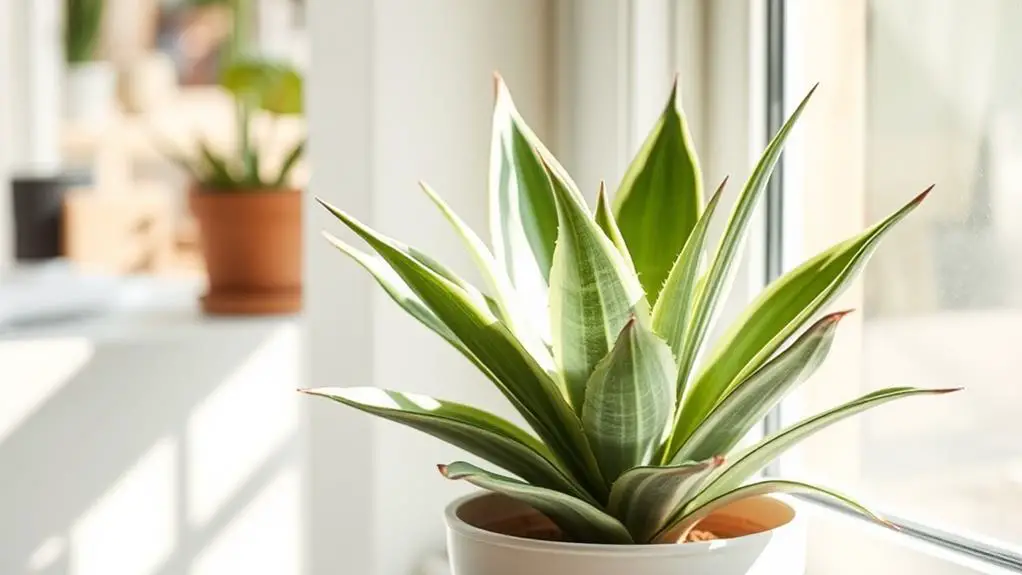
The Variegated Agave Butterfly thrives best under bright, direct sunlight, needing at least six hours of exposure every day for ideal health and growth.
To meet its light requirements, place your agave less than one foot from a south-facing window. This position guarantees it gets full sun, which is essential for its healthy growth. While it can handle some shade, too little light can cause poor health and growth stagnation.
If your agave is exposed to intense sunlight, filtered sunlight can help prevent leaf burn while still promoting growth. You can achieve this by using sheer curtains or placing the plant in a spot where it's partially shaded during the hottest parts of the day.
However, the Variegated Agave Butterfly is more resilient than other succulents, allowing it to withstand longer periods of bright sunlight without damage.
Watering Needs
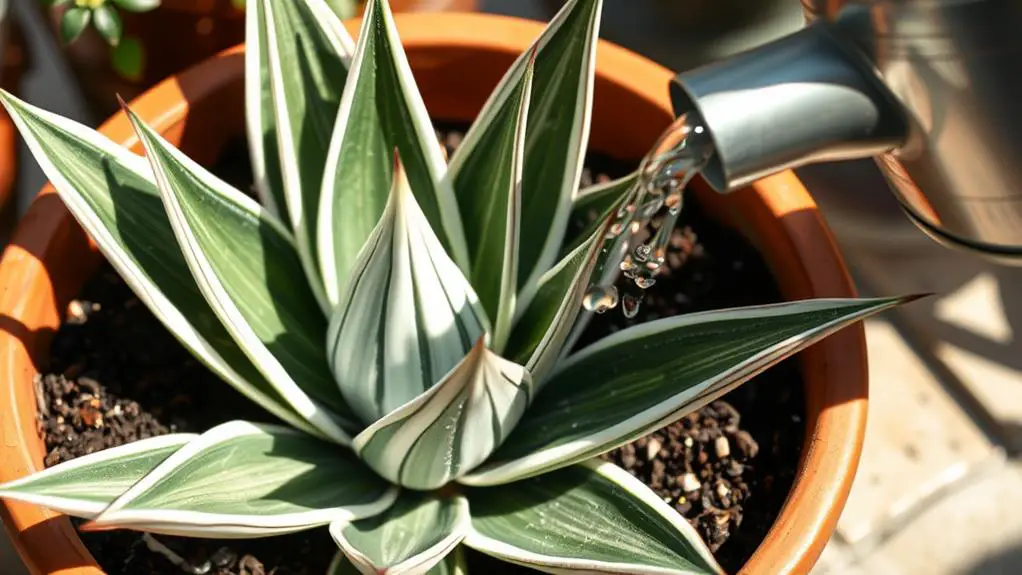
While the Variegated Agave Butterfly thrives in bright sunlight, its watering needs are quite specific to guarantee perfect health. You'll want to water this plant infrequently, only when the soil feels completely dry to the touch. This practice helps prevent root rot, a common issue when the soil stays too wet.
To maintain ideal hydration, consider using a bottom-watering system or make sure that excess water drains completely after each watering. This keeps the soil moisture just right.
During the winter months, reduce how often you water since the plant goes into dormancy. Allow the soil to dry out more thoroughly between waterings during this time.
It's essential to regularly inspect soil moisture to avoid extremes. Overwatering can lead to yellowing leaves, a clear sign of distress.
Utilizing a water calculator can also help you create a personalized watering schedule tailored to your plant's specific needs and environmental conditions.
Soil and Potting
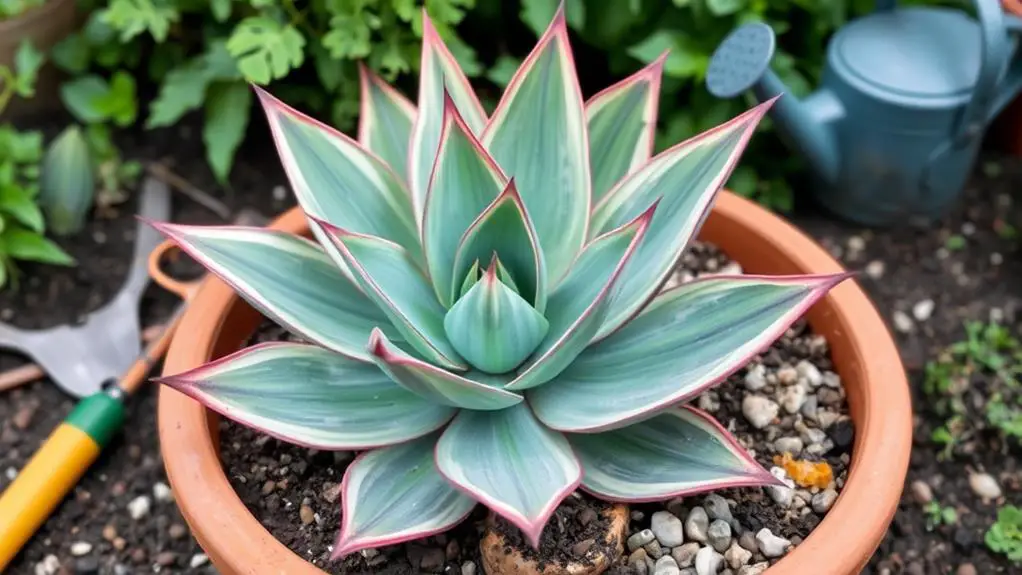
When potting your Variegated Agave Butterfly, it's vital to choose well-draining soil to guarantee its health and vigor. Start with a cactus soil mix, which is naturally designed to drain well.
To enhance this, you should add perlite or sand to the mix. These additions improve drainage and prevent moisture retention, which is important for avoiding root rot.
Make sure to avoid heavy or compacted soils, as they hold too much moisture and can harm your agave. A good potting soil blend will be light and airy, allowing water to pass through easily. This keeps the roots healthy and prevents them from becoming waterlogged.
When you're setting up your pot, place small stones at the bottom. This adds an extra layer of drainage, making sure that excess water can escape. This simple step can make a big difference in preventing root rot.
Remember to repot your Variegated Agave Butterfly when it doubles in size or at least annually. This guarantees it has enough space and nutrients to thrive.
Temperature and Humidity
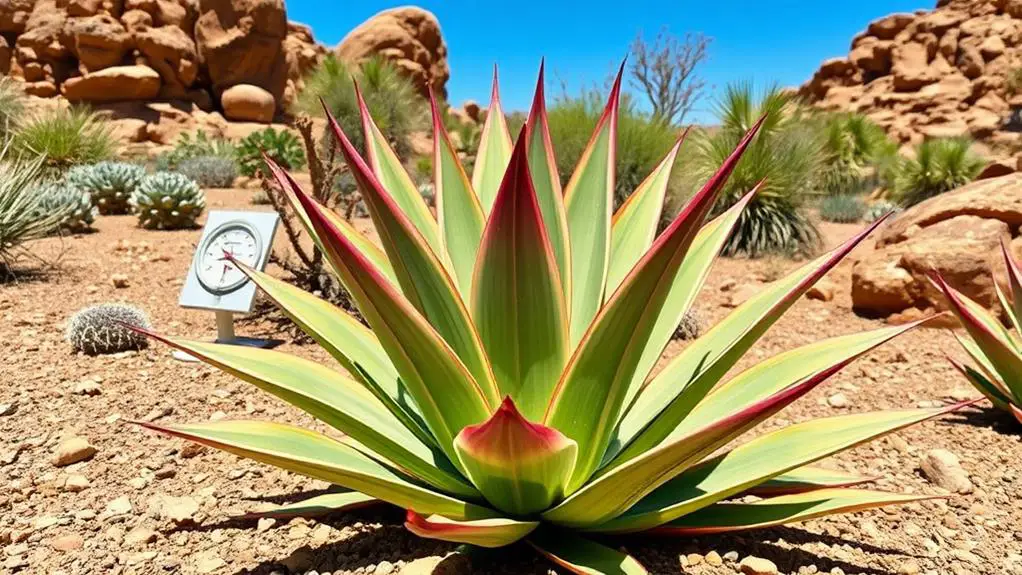
Guaranteeing ideal temperature and humidity is key to keeping your Variegated Agave Butterfly plant healthy. This plant thrives in warm climates with a temperature range between 65 to 85 degrees Fahrenheit.
It's important to maintain consistent warmth to promote healthy growth. Fluctuations in temperature and humidity can negatively impact its growth rate, so try to keep the environment stable.
Your Variegated Agave Butterfly is sensitive to frost and can't survive cold winter conditions outdoors. If you live in an area with low temperatures, make sure to bring the plant inside during the colder months.
Keep it away from cold drafts to prevent any damage. During winter dormancy, the plant requires less water. Reducing watering during this period helps prevent root rot and other moisture-related issues.
Here are some practical tips to guarantee a warm, stable environment for your plant:
- Maintain a temperature range of 65 to 85 degrees Fahrenheit.
- Protect the plant from frost by bringing it indoors during winter.
- Keep the plant away from cold drafts to avoid damage.
- Reduce watering during winter dormancy to prevent root rot.
Fertilizing Tips

Fertilizing your Variegated Agave Butterfly plant isn't usually necessary, as it grows slowly and gets most of its energy from sunlight. This plant thrives with minimal intervention, making plant care straightforward.
However, if you notice growth issues, you can add a few drops of water-soluble fertilizer during the growing season to give it a gentle boost.
Annual replacement of the potting soil generally provides all the nutrients your plant needs. The fresh soil helps prevent nutrient depletion, guaranteeing your Variegated Agave Butterfly stays healthy without constant fertilization.
Over-fertilization can be harmful, potentially causing nutrient burn and damaging your plant. So, it's best to be cautious and avoid adding too much fertilizer.
For peak health, keep an eye on your plant's growth. If it seems sluggish or shows signs of nutrient depletion, a small amount of water-soluble fertilizer can help.
But remember, less is more with this resilient plant. By following these fertilization tips, you'll support your Variegated Agave Butterfly in thriving without the risk of over-fertilization.
This approach makes plant care manageable and guarantees your plant remains vibrant and healthy.
Repotting Guidelines
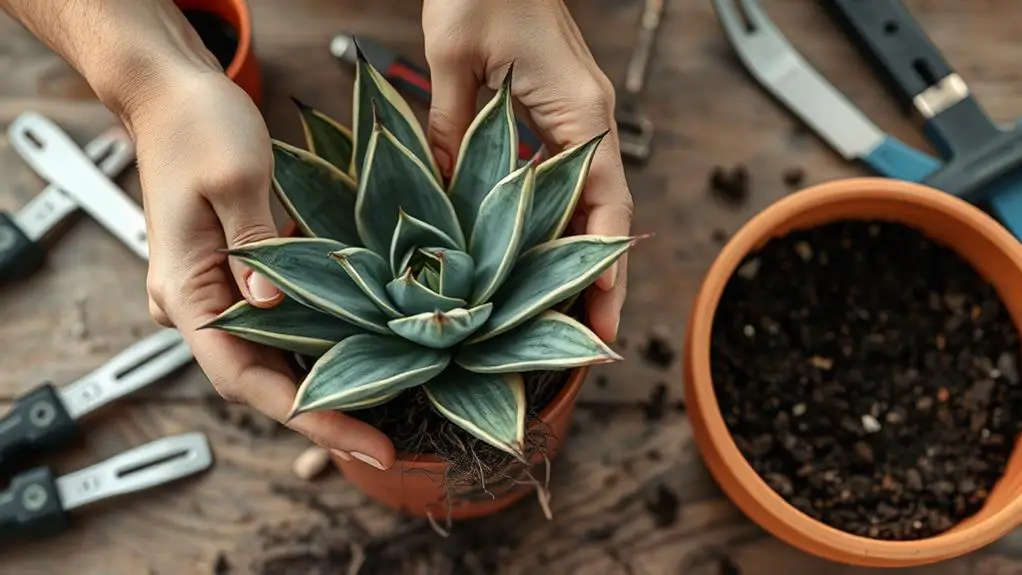
When your variegated Agave Butterfly plant doubles in size or once a year, it's time to repot.
Start by choosing a new pot with drainage holes and a well-draining mix rich in perlite or vermiculite.
Carefully remove the plant, loosen any tightly bound roots, and place it in the new pot at the same soil level as before, then water thoroughly.
When to Repot
Repot your variegated Agave Butterfly plant when it becomes root-bound, which usually happens every 1 to 2 years or once the plant has doubled in size.
Repotting is vital for your Agave's health and growth. Here's what you need to guarantee a smooth process:
- Choose the right pot: Pick a pot that's 1-2 inches larger in diameter than the current one. This gives your Agave room to grow and guarantees proper drainage.
- Use well-draining soil: A mix of 50% cactus soil and 50% perlite or horticultural grit works best. It prevents moisture retention and root rot.
- Water thoroughly after repotting: Once you've repotted, water the plant deeply. Then, let the soil dry out completely before the next watering to help establish healthy roots.
- Wear gloves: Agave plants have sharp spines. Wearing gloves will protect your hands from injury while you care for your plant.
Repotting Steps
Before you begin repotting your variegated Agave Butterfly plant, make sure you have all the necessary materials ready.
You'll need a new pot, one size larger than the current one, with drainage holes to prevent water retention and root rot. Also, gather well-draining soil—ideally, a mix of cactus or succulent potting mix combined with perlite or vermiculite for best drainage.
Start by gently removing the plant from its current pot. Carefully untangle any tightly bound roots to help the root system expand in its new home.
Place the plant in the new pot, making sure it sits at the same depth as before. This helps the plant adjust without stress.
Next, fill in around the plant with your well-draining soil mix. Press the soil gently to remove air pockets but avoid compacting it too much.
Once the plant is secured in the new pot, water thoroughly. It's crucial to let the soil dry completely before the next watering to avoid overwatering issues.
Repotting your variegated Agave Butterfly during the growing season minimizes stress and promotes healthier growth.
Following these steps guarantees your plant care routine is on point, fostering a thriving and beautiful agave.
Propagation Methods
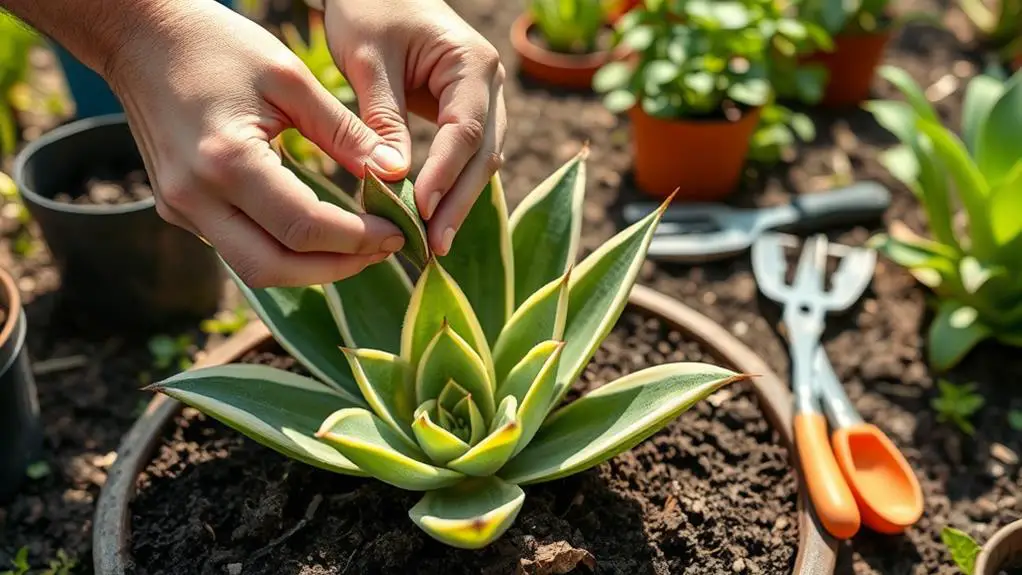
To propagate variegated Agave Butterfly, start by removing offsets, also known as pups, once they've grown to about one-third the size of the parent plant. This guarantees they've a developed root system.
Use a sharp, sterile knife to make clean cuts when separating the pups from the parent plant. This helps minimize damage and reduces the risk of infection.
After cutting, let the ends of the offsets dry and callus for several days. This step is vital to prevent rot when you plant them.
Once they've callused, plant the pups in well-draining soil. This type of soil is indispensable for healthy root growth and to avoid waterlogging.
Water the newly planted pups deeply but infrequently. It's important to allow the soil to dry completely between waterings. This promotes strong root development.
Place the offsets in a spot where they receive bright sunlight. Warm conditions and adequate light are key for their growth.
- Remove offsets (pups) when they reach one-third the size of the parent plant
- Use a sharp, sterile knife for clean cuts
- Allow cut ends to callus for several days
- Plant in well-draining soil and water deeply but infrequently
Monitor for signs of growth, and you'll see your new plants thrive!
Pest Management
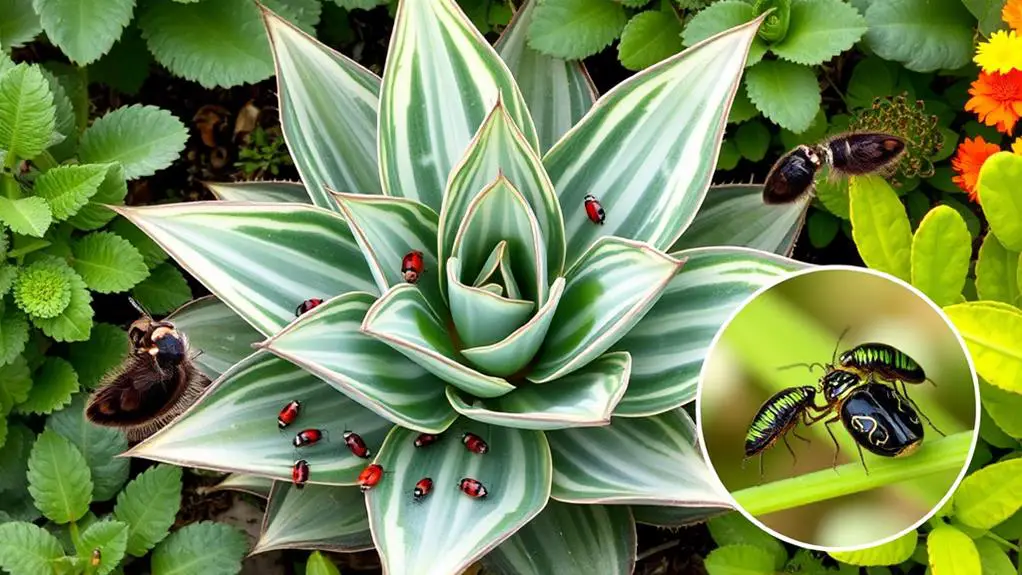
While you're nurturing your newly propagated variegated Agave Butterfly plants, it's also important to stay vigilant for potential pests. Common pests like mealybugs and scale insects can harm your plants if not addressed promptly.
Regularly inspect your plants for these intruders. Mealybugs appear as small, white, cotton-like masses and can often be removed by hand or with a cotton swab dipped in alcohol. Scale insects look like small, brown bumps and should be gently scraped off to avoid damaging the leaves.
If you notice a severe infestation, consider using biological controls or broad-spectrum insecticides. Maintaining good airflow and sunlight exposure around your plants can reduce the likelihood of pest problems and promote healthy growth.
Make certain your plants get plenty of light and space, which helps keep pests at bay.
Watch for yellowing leaves, as this can be a sign of overwatering or a pest issue. Allow the soil to dry out between waterings to avoid overwatering, which can attract pests.
Frequently Asked Questions
How Do You Care for Variegated Agave?
You'll need to give your Variegated Agave Butterfly at least 6 hours of sunlight daily. Water it sparingly, ensuring soil dries out completely. Use well-draining mix, fertilize annually in spring, and check for pests regularly.
How to Keep Agave Plants Healthy?
Make certain your agave plants stay healthy by giving them at least six hours of sunlight daily, watering only when the soil is dry, using well-draining soil, fertilizing sparingly, and regularly checking for pests.
How to Care for Agave Plants in Pots?
To care for agave plants in pots, use a well-draining mix, water when soil's dry, and make certain pots have drainage holes. Place them in full sun for 6 hours daily, and repot during the growing season.
What to Feed Agave Plants?
You don't need to feed agave plants often. If growth issues occur, use a few drops of water-soluble fertilizer during the growing season. Annual soil replacement and compost can also help. Watch for yellow leaves indicating nutrient depletion.
Conclusion
Taking care of your Variegated Agave Butterfly Plant isn't hard if you follow these tips. Give it lots of light, let the soil dry out between waterings, and use well-draining soil. Keep the temperature warm, watch for pests, and repot when necessary. With attention and a bit of love, your plant will thrive. You've got this! Enjoy watching your plant grow and know that your efforts truly make a difference. Happy gardening!

